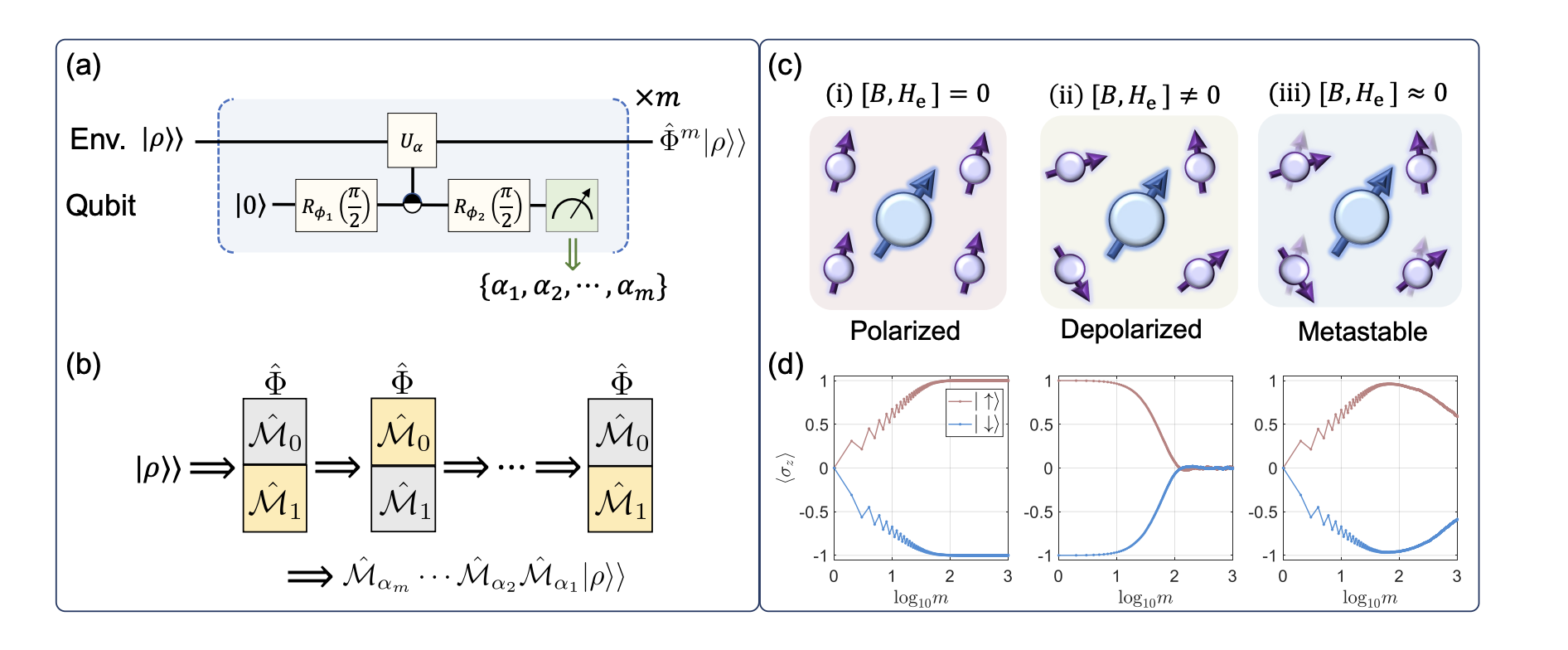Researchers have developed a theoretical framework to understand the impact of coherence measurements on a qubit’s quantum environment. The study reveals that repetitive Ramsey interferometry measurements (RIMs) can steer the quantum environment to states different from its initial one, a phenomenon known as ‘steering’.
The research also identifies three distinct environment steering effects—polarization, depolarization, and metastable polarization. This work is significant for quantum technologies, as it not only clarifies the measurement backaction and statistics of repetitive qubit coherence measurements but also aids in designing protocols to engineer the state or dynamics of a quantum environment.
What is the Impact of Coherence Measurements on a Qubit’s Quantum Environment?
The study of quantum coherence is crucial to the field of quantum technologies. Quantum coherence, a fundamental property of quantum mechanics, gives rise to non-classical phenomena such as interference and entanglement. It is at the heart of quantum information processing. However, physical qubits often suffer loss of coherence, or decoherence, due to coupling to a classical or quantum environment. This environment is termed classical if it only imparts random phases to superposition states of the qubit but suffers no backaction from the qubit. In some cases, such noise can be well approximated as classical stochastic noise, for example, Gaussian noise.
However, the qubit and the environment generally should be regarded as a composite quantum system. The qubit can have non-negligible backaction on the dynamics of the quantum environment through either the qubit-environment coupling or the measurement and control process. In quantum technologies, it is crucial to characterize the qubit decoherence process by directly measuring the evolution of qubit coherence. This is either to characterize the quality of physical qubits in quantum computing or to reveal useful information about the environments in quantum sensing.
How are Qubit Coherence Measurements Conducted?
Qubit coherence is conventionally measured by repetitive Ramsey interferometry measurements (RIMs). This is often done with an underlying assumption that the environment remains unaffected after each RIM measurement and the outcomes of all RIM measurements are independent and identically distributed (iid). Then a satisfactory signal-to-noise ratio can be achieved with a relatively large number of repetitions of such RIMs. While this assumption is often valid for a classical environment, it may not hold for a general quantum environment.
A single cycle of RIM slightly alters the state of the quantum environment by inducing a quantum operation on it. If the duration of each RIM cycle is much shorter than the relaxation times of the environment, with repetitive RIM measurements, the environment can be gradually steered to states quite different from its initial one. Such a steering effect also makes the qubit measurement statistics develop some non-classical features.
What is the Concept of Steering in Quantum Mechanics?
Schrödinger formulated the concept of steering as driving one part of a bipartite system to a target state with nonzero probability by performing appropriate measurements on the other part. In the context of this study, steering is used in this sense. Recent experiments in solid-state systems have reported signatures of the backaction of qubit measurements on the quantum environment. In other experiments, such backaction has been utilized to purify a spin bath. However, there is still a lack of a general theoretical framework to address the interesting general problems of how repetitive coherence measurements of a qubit steer its quantum environment and what the measurement statistics look like when considering the environment steering effect.
What is the Theoretical Framework for Qubit Coherence Measurements?
In this paper, the researchers develop a general framework to systematically account for the backaction of sequential qubit coherence measurements on a quantum environment. The essential idea is to model the repetitive RIM process as repetitive quantum operations on the environment. They show that an RIM induces a quantum channel on the quantum environment, and sequential RIMs gradually steer the quantum environment to the fixed points of the channel.
For the first time, they reveal three distinct environment steering effects—polarization, depolarization, and metastable polarization—depending on the commutativity of the noise operator B and the environment Hamiltonian He. Realistic examples of central spin models are presented to demonstrate the measurement statistics and bath steering effects. This work not only elucidates the measurement backaction and statistics of repetitive qubit coherence measurements but is also useful for designing protocols to engineer the state or dynamics of a quantum environment with a qubit ancilla.
What are the Implications of this Study?
This study is significant as it provides a general theoretical framework to account for the measurement backaction in sequential RIMs. It reveals three distinct environment steering effects—polarization, depolarization, and metastable polarization—depending on the commutativity of the noise operator B and the environment Hamiltonian He. This work not only elucidates the measurement backaction and statistics of repetitive qubit coherence measurements but is also useful for designing protocols to engineer the state or dynamics of a quantum environment with a qubit ancilla. This could have far-reaching implications in the field of quantum technologies, particularly in quantum computing and quantum sensing.
Publication details: “How coherence measurements of a qubit steer its quantum environment”
Publication Date: 2024-04-09
Authors: Chudan Qiu, Yong Jin, Junxiang Zhang, Gang‐Qin Liu, et al.
Source: arXiv (Cornell University)
DOI: https://doi.org/10.48550/arxiv.2404.06053

